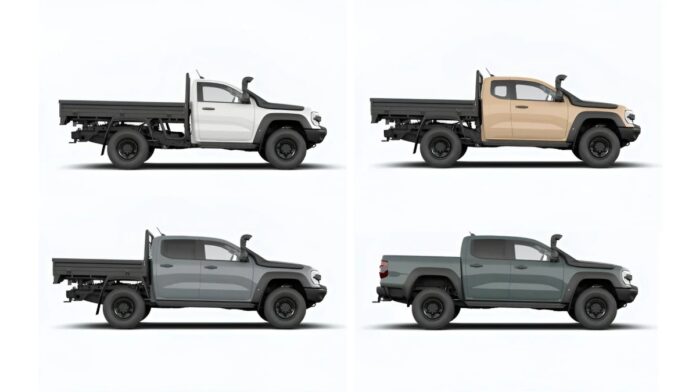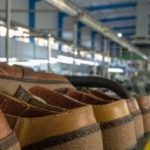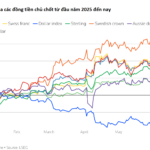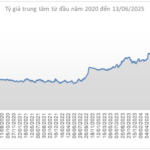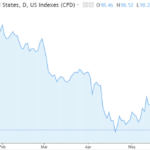Just two months after its global debut, the Ford Ranger Super Duty has been priced from AUD 82,990 to AUD 89,990 (approximately USD 1.41 billion to USD 1.53 billion). However, these prices exclude on-road costs, and the top-of-the-line Super Duty Dual-cab XLT has yet to receive an official price. With these figures, the Super Duty will be the most expensive diesel-powered Ranger in Australia to date.
The Super Duty single-cab variant starts at AUD 82,990. The ‘Super Cab’ chassis is priced at AUD 86,490, while the dual-cab chassis comes in at AUD 89,990. The better-equipped dual-cab and XLT variants will arrive later in 2026.
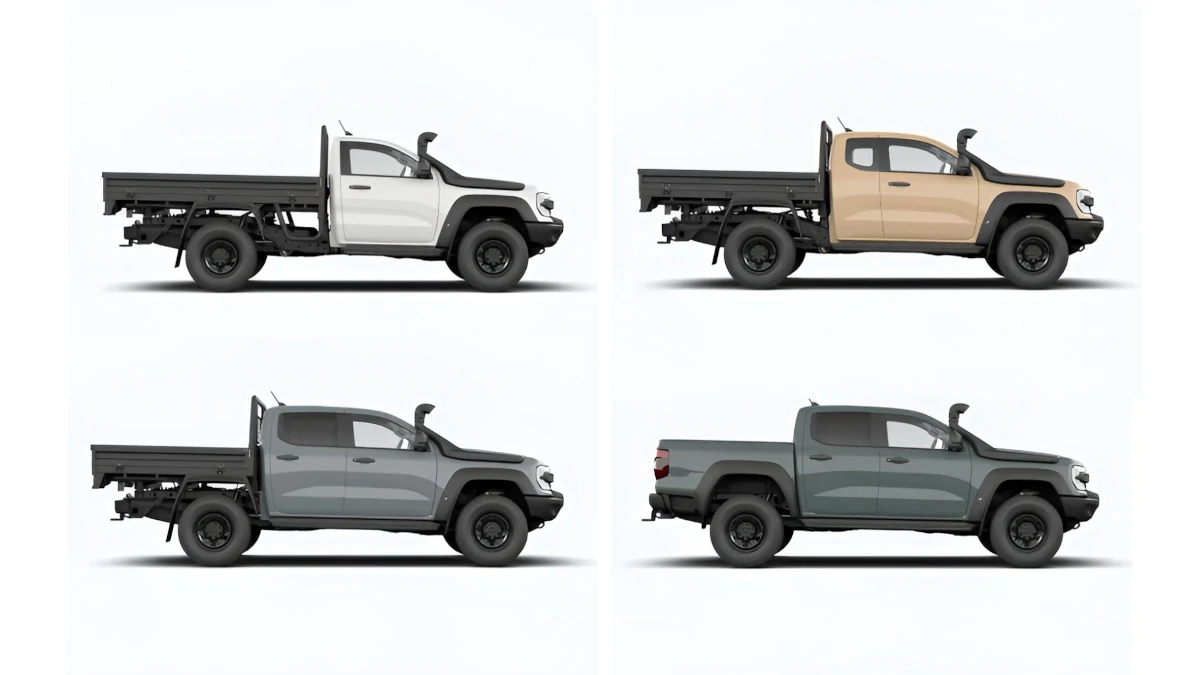
The different variants and bed styles offered on the Ford Ranger Super Duty. Image source: Ford
In comparison, the Super Duty single-cab is nearly twice as expensive as the standard four-wheel-drive single-cab Ranger (AUD 47,980 plus on-road costs with a bi-turbo four-cylinder oil burner). The Super Cab chassis is AUD 23,000 more than the Ranger XLT V6 Super Cab chassis (AUD 66,940), and only AUD 450 less than the Ranger Raptor V6 twin-turbo.
Alternatively, a large Ford F-150 pickup – capable of towing 4.5 tons – starts at AUD 106,950 (plus on-road costs), just AUD 16,960 more than the current top-of-the-line Ranger Super Duty.
On top of that, Ford Ranger Super Duty customers will have to pay extra for a steel bed at the rear, ranging from AUD 5,966 to AUD 9,376, depending on the body style and color. This is because the standard Super Duty only comes with a bare chassis.
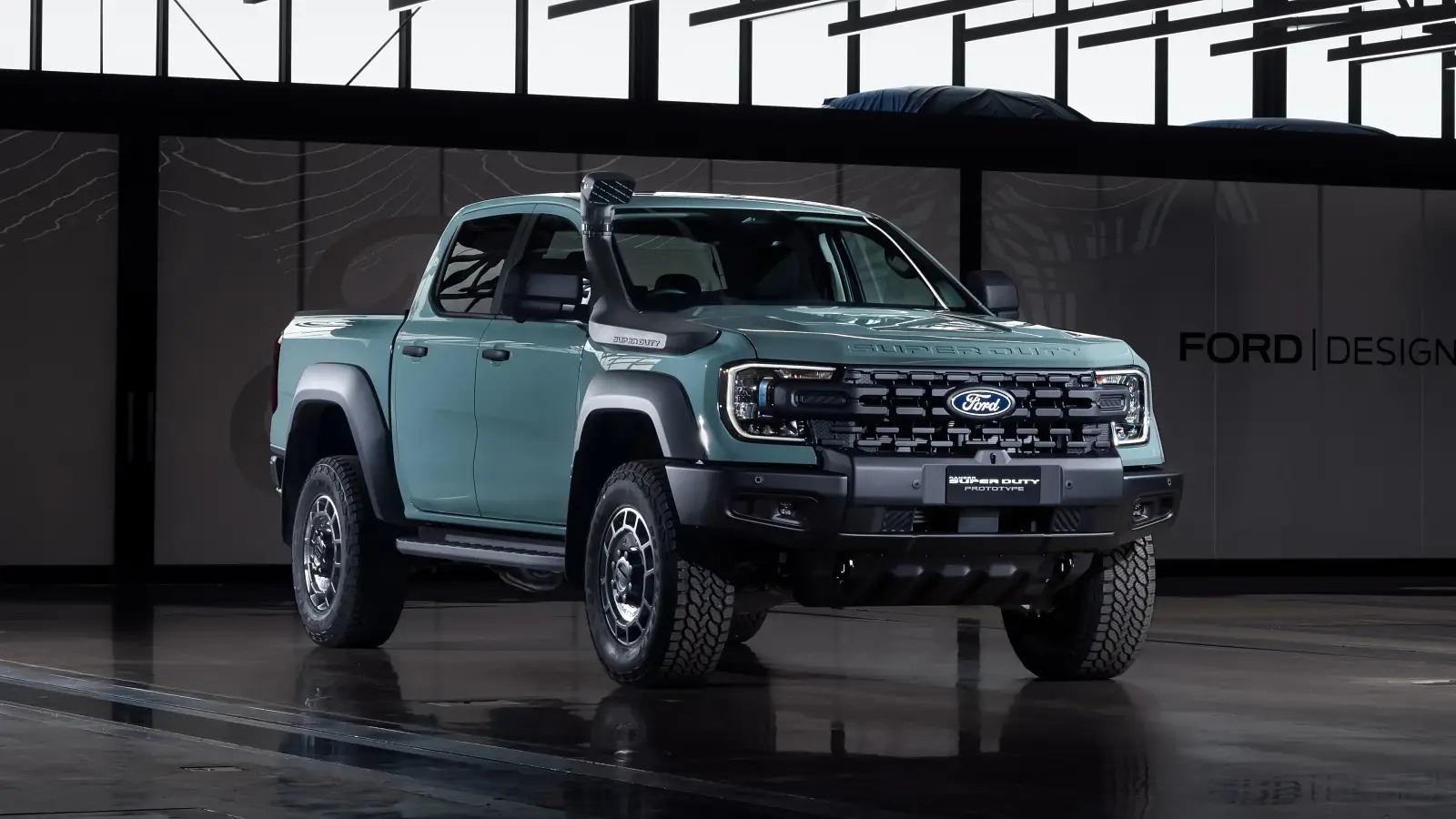
Image source: Ford
The Super Duty is a heavy-duty, upgraded version of Ford’s popular pickup, with a 4,500kg towing capacity for braked trailers, a combined gross vehicle weight of 8,000kg, off-road-oriented tweaks, a diesel V6 engine, and a nearly 2-ton payload capacity.
The 3.0L turbo-diesel V6 engine has been retuned for heavy-duty use and to meet stricter Euro 6 emissions standards. As a result, it has been de-tuned by approximately 40 horsepower, now producing 206 horsepower and 600Nm of torque compared to the standard Ranger with the same oil-burning V6.
Ford has confirmed the payload ratings for the Super Duty: up to 1,982kg for the single-cab chassis, 1,896kg for the Super Cab, and up to 1,825kg for the dual-cab chassis. The latter figure is compared to 1,150kg for the standard Ranger XLT V6 dual-cab chassis.
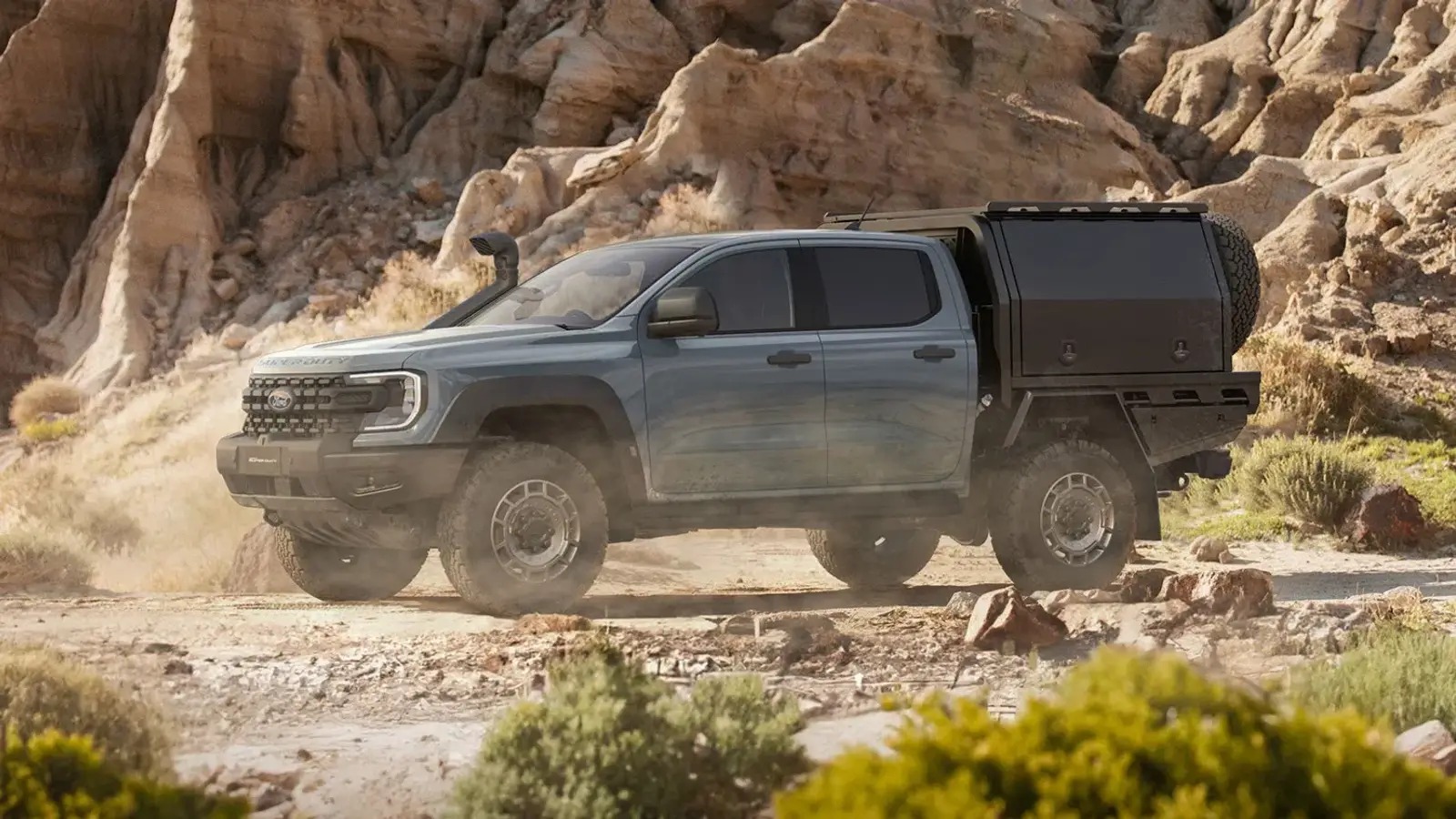
Image source: Ford
To optimize performance, the Ford Ranger Super Duty comes standard with 18-inch eight-lug fixed wheels wrapped in 33-inch all-terrain tires. The fuel tank capacity has been increased to 130 liters, boosting the overall range to 1,000 km. Ford has also added underbody armor, reinforced the chassis to handle heavier loads, and retuned the suspension. Water wading depth has been increased by 50mm to 850mm.
Styling changes include a new hood, front fenders and grille, unique wheels, and black wheel arch flares. Initially, five colors will be offered – Seismic Tan (exclusive to Super Duty), Arctic White, Shadow Black, Command Grey, and Aluminium Metallic silver – with Traction Green to be added later.
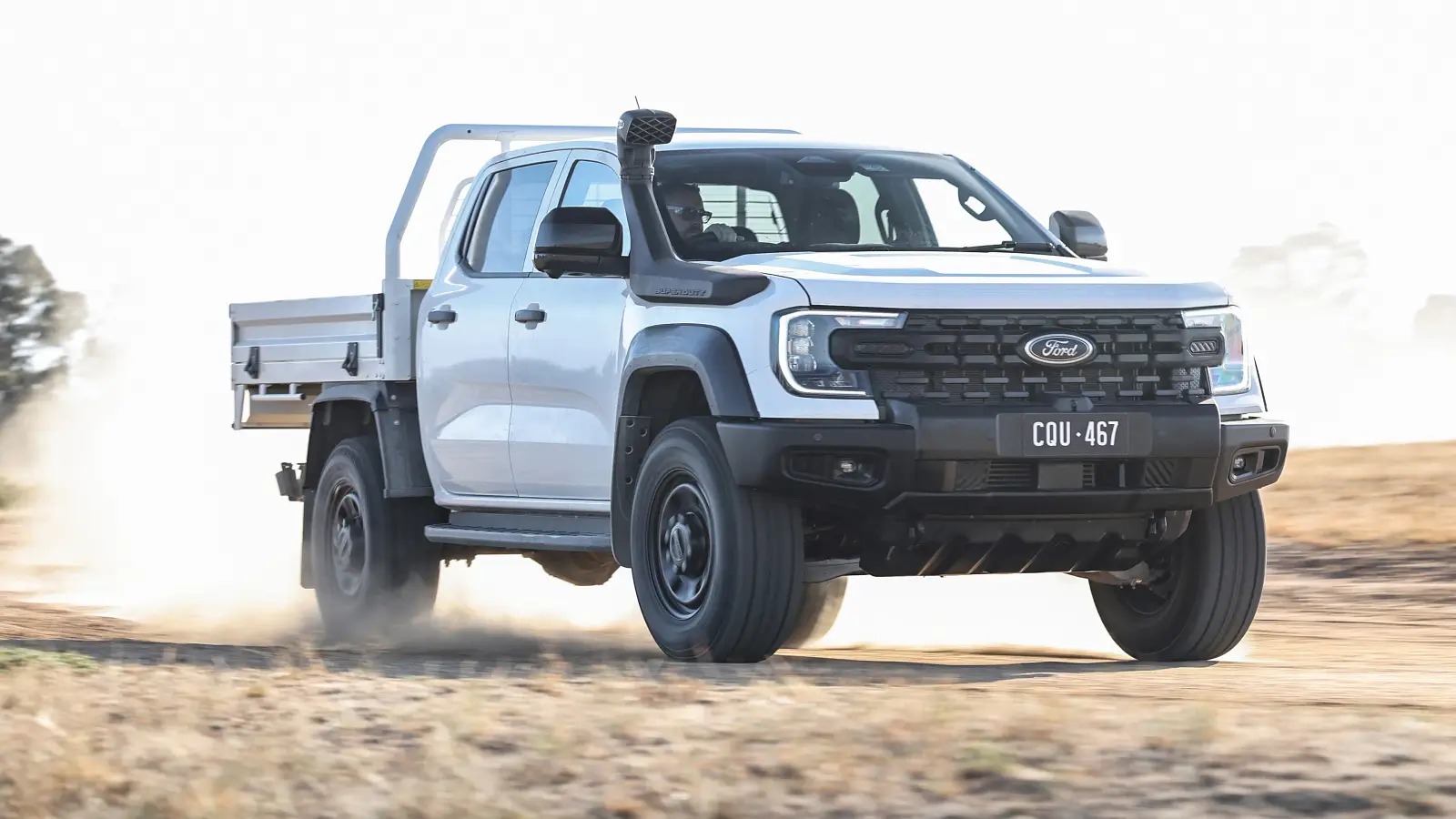
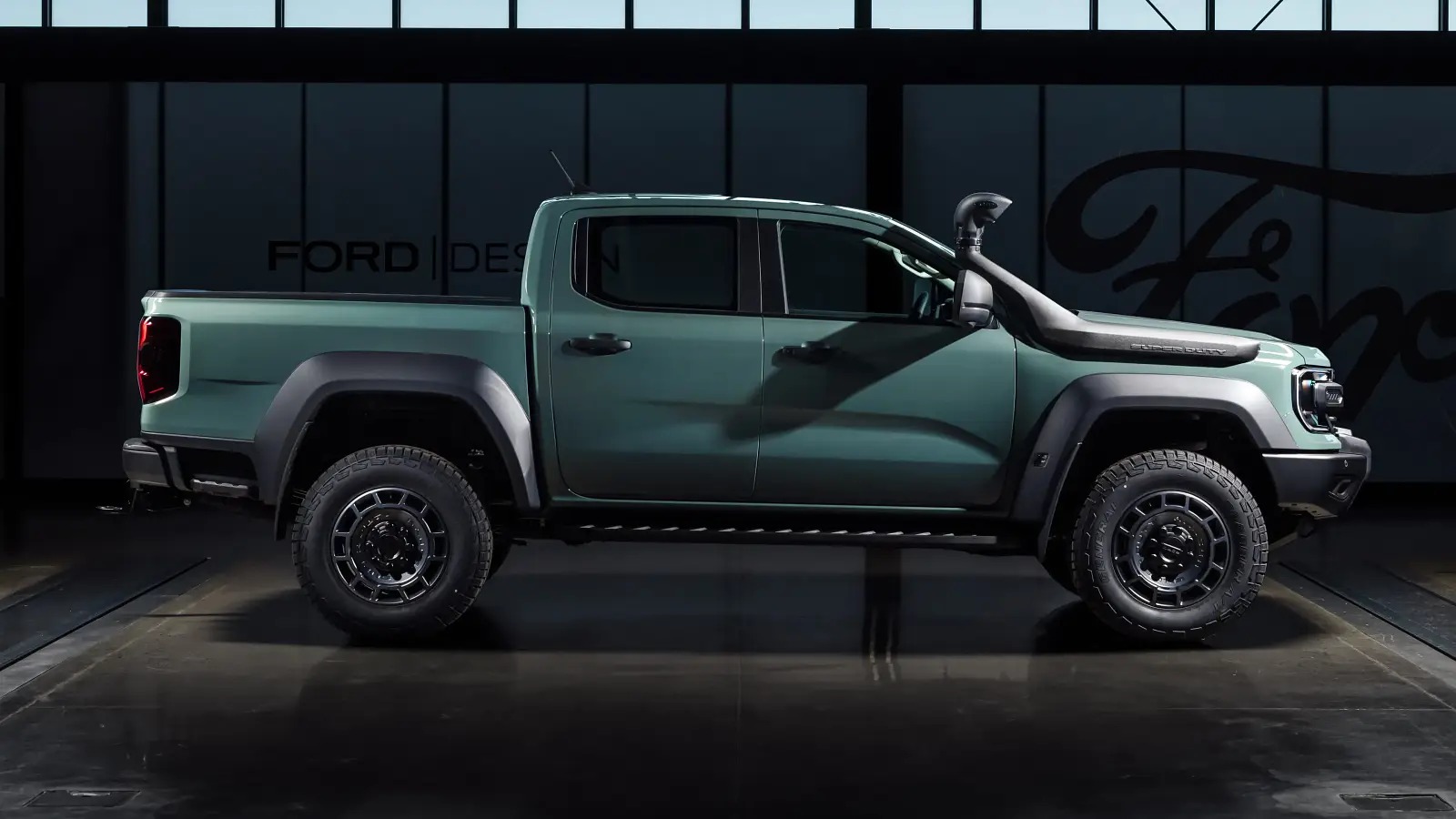
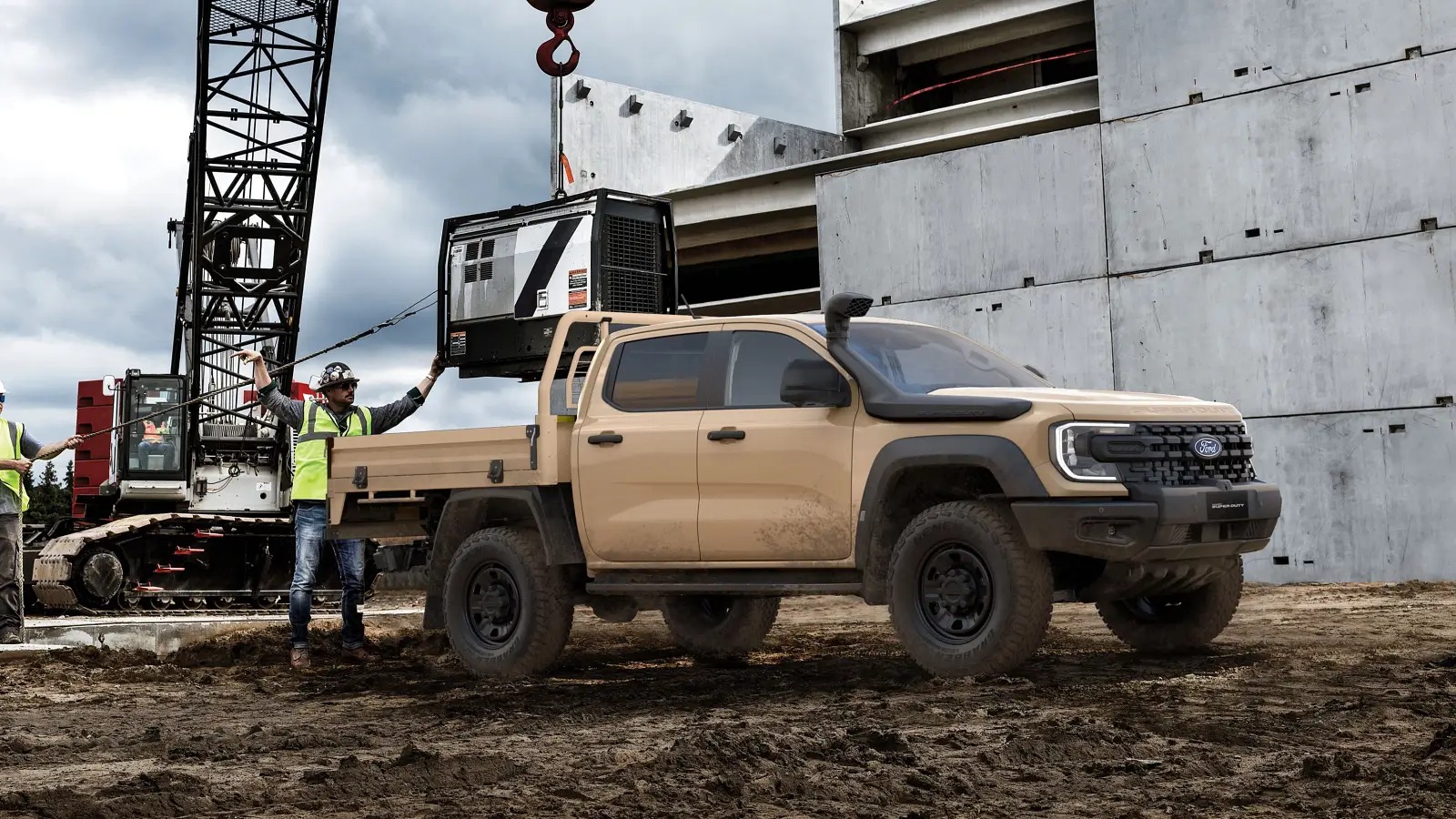
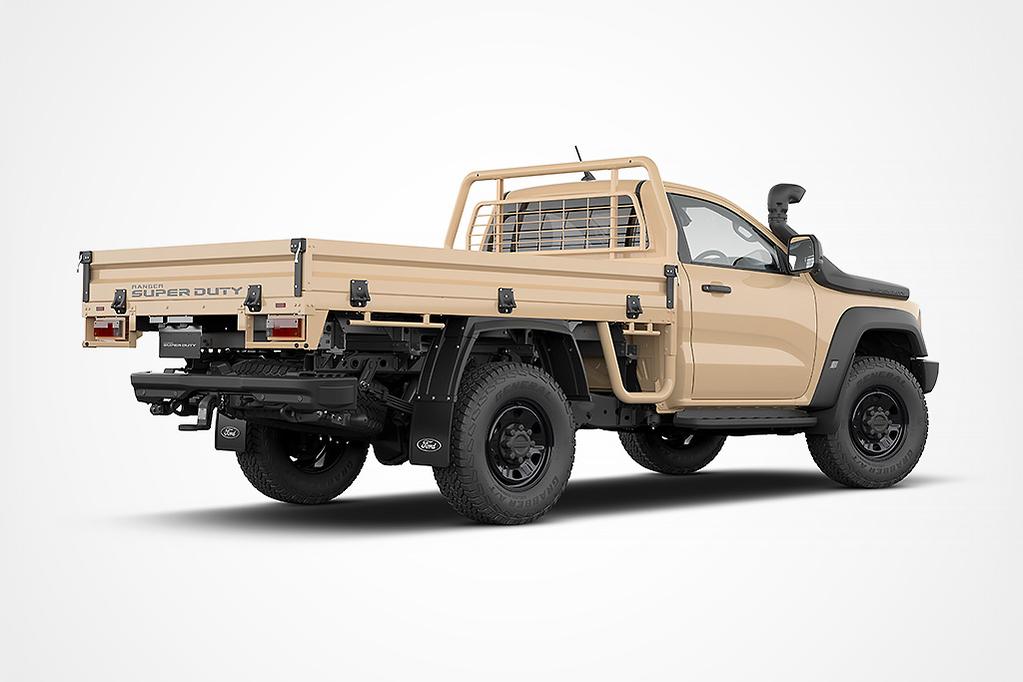
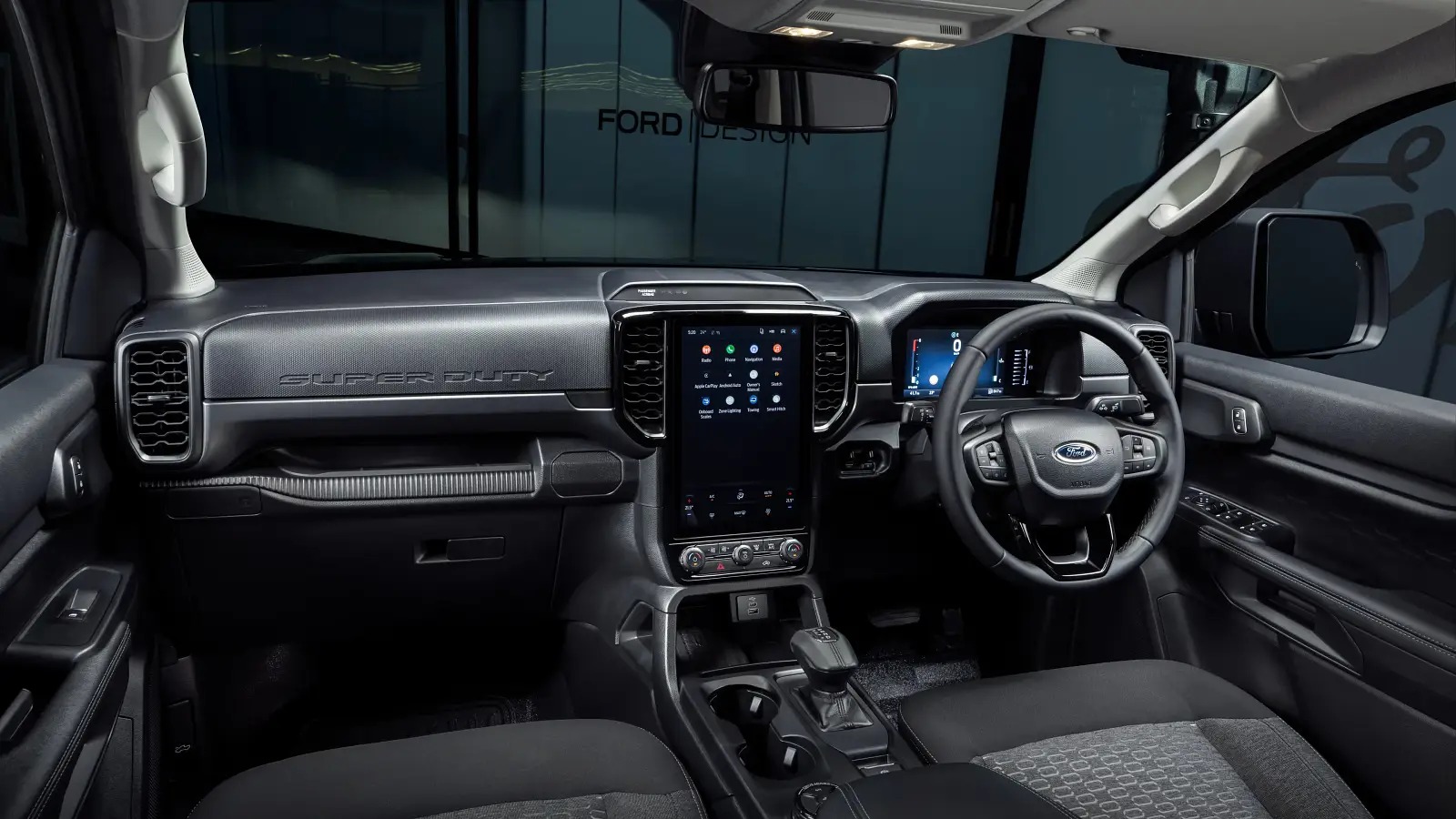
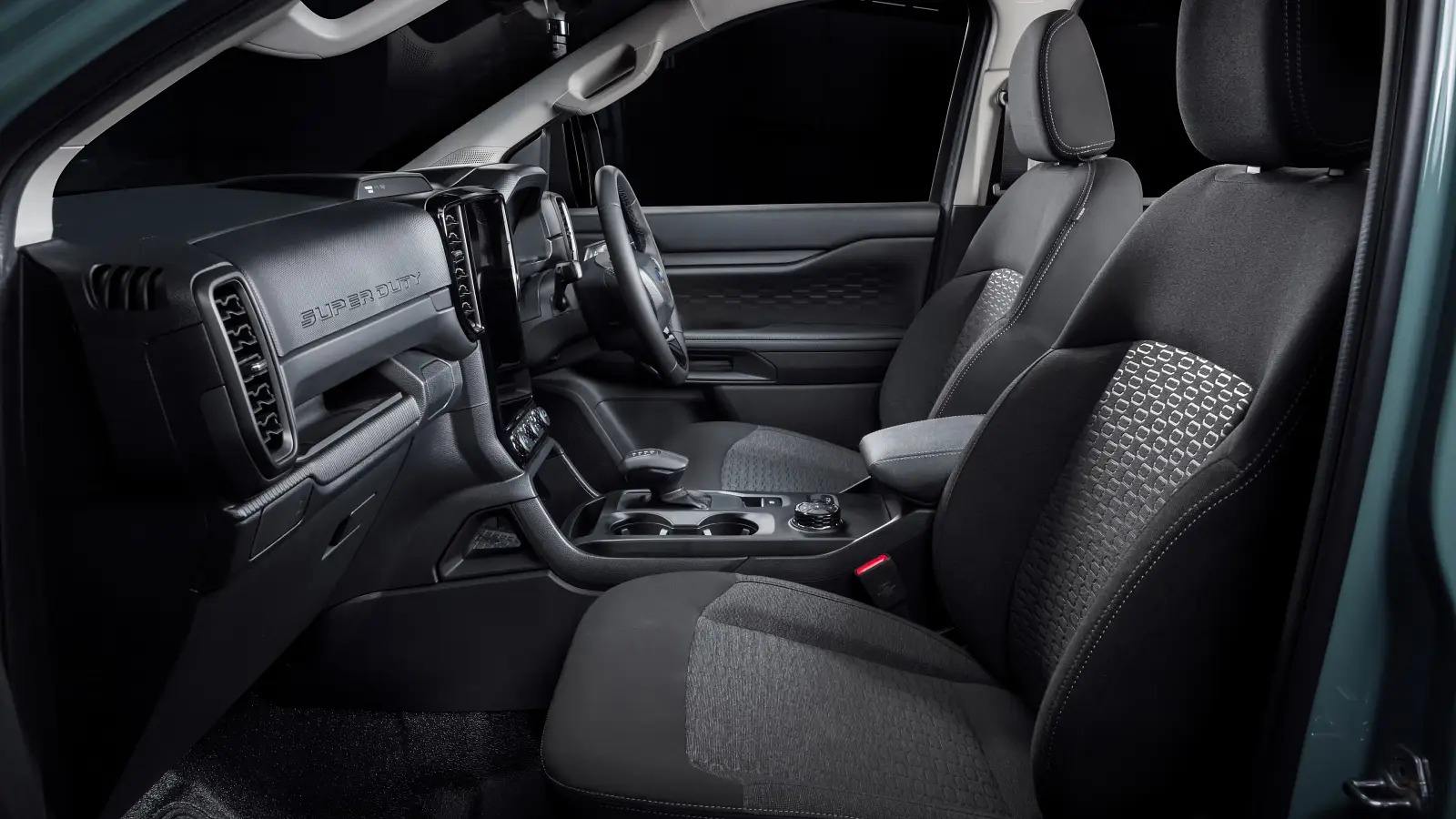
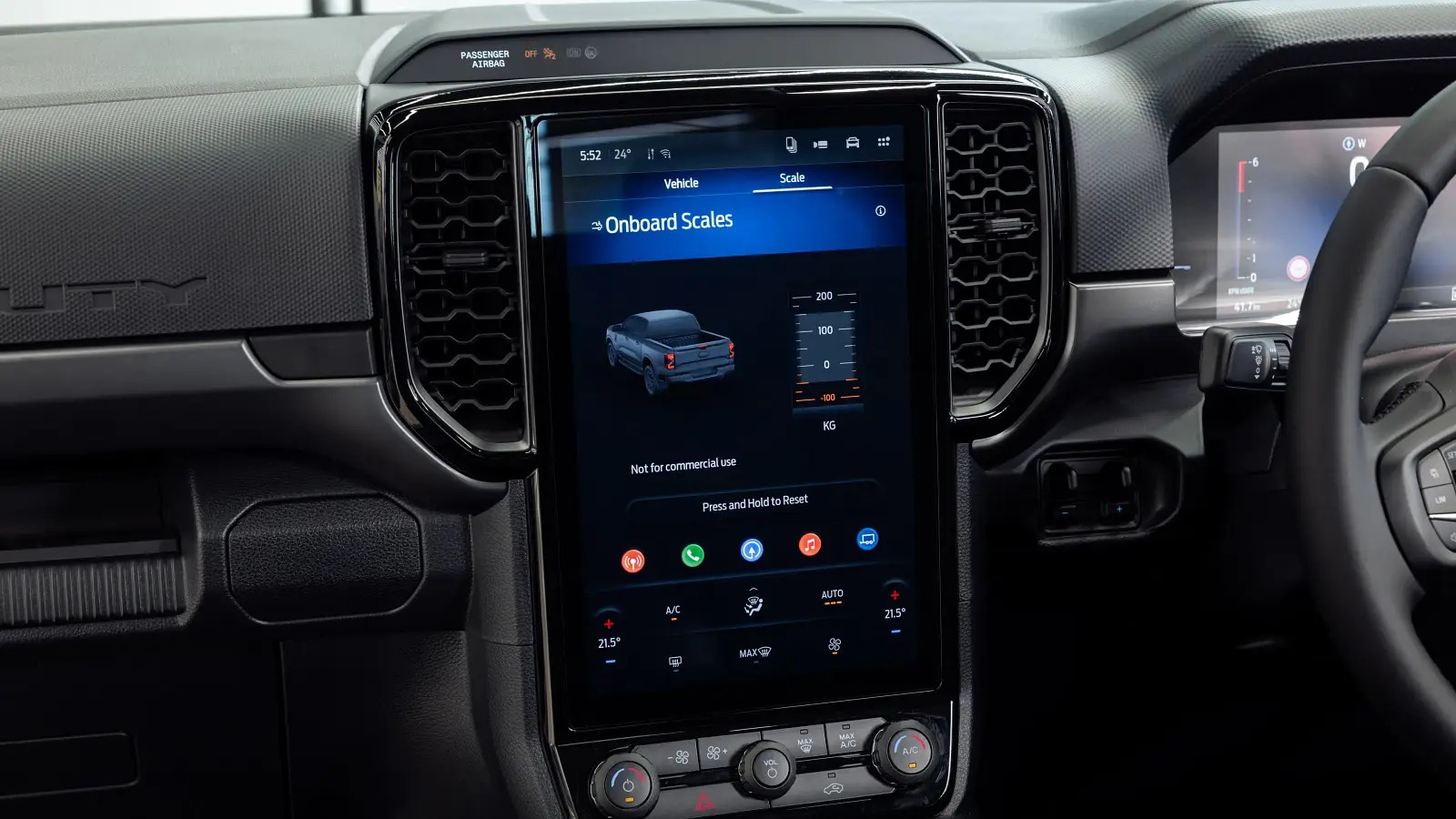
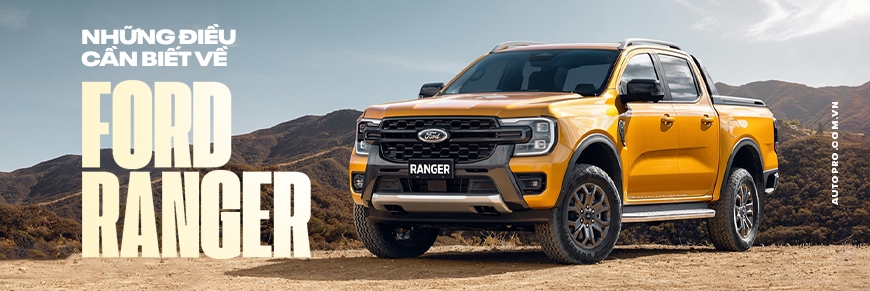
Image source: Ford
Hoàng Dũng
The Greenback’s Slippery Slope
The U.S. dollar remained on a downward trajectory in the week of June 9–13, 2025, despite a brief recovery following Israel’s strike on Iran.
“Trade War Truce: Markets Await Outcome of Crucial Tariff Talks”
The Vietnamese Dong has demonstrated a remarkable resilience over the past month, bucking the trend of depreciation seen among many Asian currencies. Contrary to the performance of its regional peers, the Vietnamese currency maintained its stability. Should the ongoing trade, geopolitical, and monetary negotiations yield positive results, the pressure on exchange rates will ease, providing the State Bank of Vietnam with the necessary flexibility to sustain this stability in the long term.
Optimizing the Gold Market: Starting with Transparency
After 13 years, Decree No. 24/2012/ND-CP on the management of gold business activities remains pertinent in removing gold from the banking credit system and preventing the “goldification” of the economy. However, the question of how to channel these resources into productive business ventures rather than hoarding and clandestine transactions remains unanswered.

